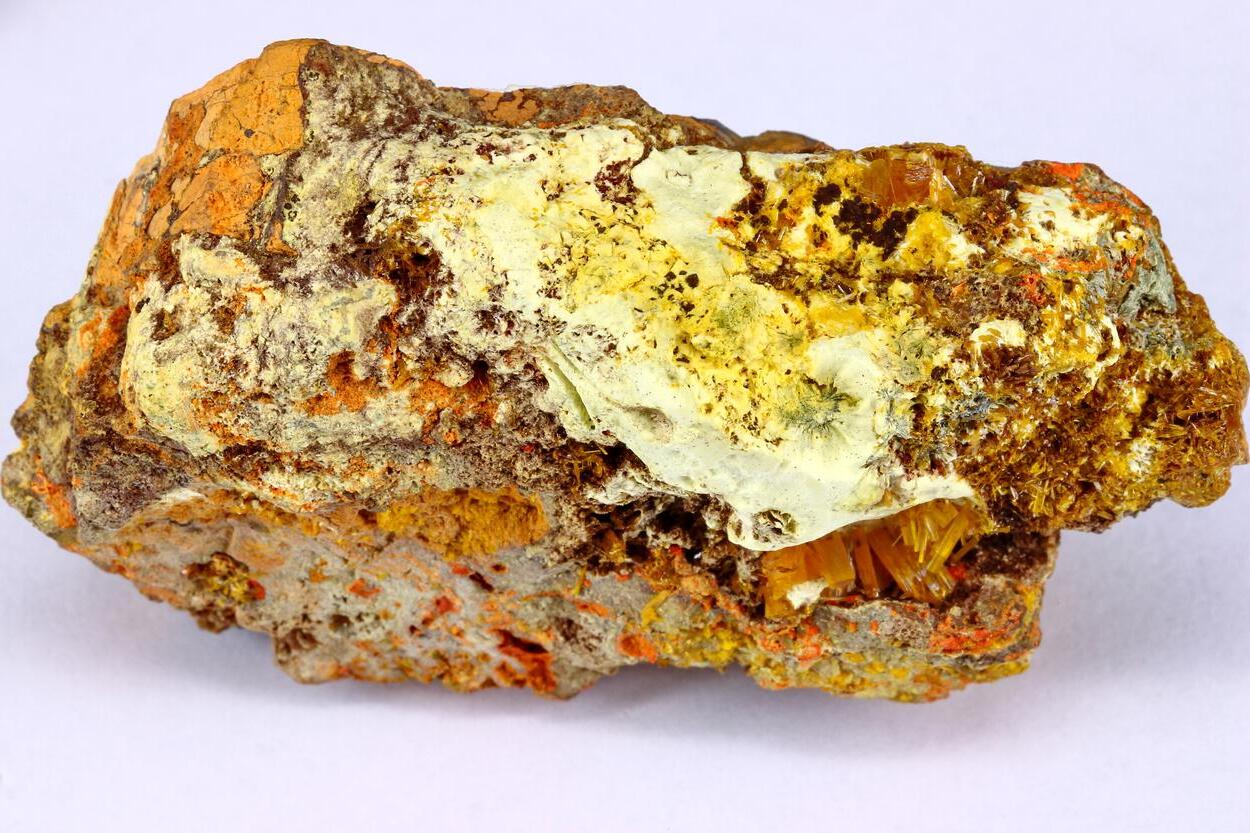
Becquerelite is a rare uranium mineral that intrigues both scientists and collectors. Named after the famous physicist Henri Becquerel, this mineral has a lot more to it than just a fancy name. What makes Becquerelite so special? For starters, it forms in the oxidation zones of uranium deposits, often appearing as bright yellow crystals. This mineral is not just a pretty face; it plays a crucial role in understanding uranium deposits and their environmental impacts. Whether you're a geology enthusiast or just curious about unique minerals, learning about Becquerelite offers a glimpse into the fascinating world of radioactive minerals. Buckle up for 30 intriguing facts that will make you see this mineral in a whole new light!
Key Takeaways:
- Becquerelite, a yellow uranium mineral, is named after physicist Henri Becquerel. It's found in specific locations worldwide and has important uses in scientific research, but must be handled with care due to its radioactive nature.
- Becquerelite's bright yellow color and unique properties make it a valuable mineral for scientific research, geological studies, and environmental monitoring. However, its radioactive nature requires careful handling and safety precautions.
What is Becquerelite?
Becquerelite is a fascinating mineral named after the famous physicist Henri Becquerel. It has a unique composition and interesting properties that make it a subject of study for many scientists. Here are some intriguing facts about this mineral.
-
Becquerelite is a uranium mineral with the chemical formula Ca(UO2)6O4(OH)6·8(H2O).
-
It was named in honor of Henri Becquerel, who discovered radioactivity.
-
This mineral typically forms in the oxidation zones of uranium deposits.
-
Becquerelite is known for its bright yellow color, which makes it easily identifiable.
-
It has a monoclinic crystal system, meaning its crystal structure is shaped like a skewed rectangle.
Where is Becquerelite Found?
Becquerelite is not a common mineral, but it can be found in specific locations around the world. Here are some places where this mineral has been discovered.
-
One of the primary locations for Becquerelite is the Shinkolobwe Mine in the Democratic Republic of Congo.
-
It has also been found in the Colorado Plateau in the United States.
-
In Canada, Becquerelite can be located in the Eldorado Mine in Saskatchewan.
-
The Czech Republic is another country where this mineral has been discovered.
-
Becquerelite has been identified in the Ruggles Mine in New Hampshire, USA.
Physical Properties of Becquerelite
Understanding the physical properties of Becquerelite can help in identifying and studying this mineral. Here are some key characteristics.
-
Becquerelite has a hardness of 2.5 on the Mohs scale, making it relatively soft.
-
It has a specific gravity of approximately 4.8, indicating it is quite dense.
-
The mineral exhibits a vitreous to pearly luster, giving it a shiny appearance.
-
Becquerelite is translucent, allowing light to pass through but not detailed images.
-
It has a perfect cleavage in one direction, meaning it can easily split along that plane.
Chemical Composition of Becquerelite
The chemical makeup of Becquerelite is complex and interesting. Here are some details about its composition.
-
Becquerelite contains calcium and uranium as its primary elements.
-
The mineral also includes oxygen and hydrogen in its structure.
-
It is a hydrated mineral, meaning it contains water molecules within its crystal lattice.
-
Becquerelite can sometimes contain trace amounts of lead and thorium.
-
The presence of uranium makes Becquerelite radioactive, requiring careful handling.
Uses and Applications of Becquerelite
While Becquerelite is not widely used in commercial applications, it has some important uses in scientific research.
-
Becquerelite is studied for its radioactive properties, contributing to our understanding of radioactivity.
-
It is used in geological research to understand the formation and alteration of uranium deposits.
-
The mineral can be a collector's item due to its unique appearance and rarity.
-
Becquerelite helps in environmental studies to monitor and manage uranium contamination.
-
It is also used in educational settings to teach students about mineralogy and radioactivity.
Safety and Handling of Becquerelite
Due to its radioactive nature, Becquerelite must be handled with care. Here are some safety tips.
-
Always use protective gloves when handling Becquerelite to avoid direct contact.
-
Store the mineral in a lead-lined container to shield against radiation.
-
Limit exposure time to Becquerelite to reduce the risk of radiation exposure.
-
Ensure proper ventilation when working with this mineral to avoid inhaling any dust.
-
Dispose of Becquerelite according to regulatory guidelines to prevent environmental contamination.
The Final Word on Becquerelite
Becquerelite, a fascinating mineral, holds a unique place in the world of geology. Named after Henri Becquerel, it’s a bright yellow uranium mineral that’s both rare and intriguing. Found in places like the Democratic Republic of Congo and the United States, it’s often associated with other uranium minerals. Its striking color and radioactive properties make it a subject of interest for scientists and collectors alike.
Understanding becquerelite helps us appreciate the complexities of our planet’s geology. Its formation, characteristics, and uses provide insight into the natural processes that shape our world. Whether you’re a geology enthusiast or just curious about minerals, becquerelite offers a glimpse into the wonders of the Earth.
So next time you come across a bright yellow mineral, you might just be looking at a piece of geological history. Keep exploring, and who knows what other fascinating facts you’ll uncover!
Frequently Asked Questions
Was this page helpful?
Our commitment to delivering trustworthy and engaging content is at the heart of what we do. Each fact on our site is contributed by real users like you, bringing a wealth of diverse insights and information. To ensure the highest standards of accuracy and reliability, our dedicated editors meticulously review each submission. This process guarantees that the facts we share are not only fascinating but also credible. Trust in our commitment to quality and authenticity as you explore and learn with us.
